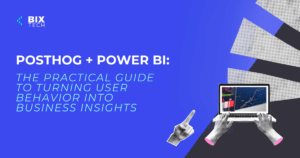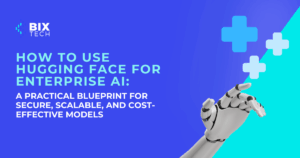The Rise of Ambient AI: How Intelligent Automation Is Transforming Modern Manufacturing

Sales Development Representative and excited about connecting people
The future of manufacturing is unfolding before our eyes, and it’s far more intelligent than ever imagined. At CES 2025, Nvidia CEO Jensen Huang spotlighted a seismic shift: artificial intelligence is moving beyond text and data, stepping into the physical world. This new era, driven by what many call “Physical AI”, is fundamentally changing how factories operate, making them smarter, more adaptive, and relentlessly efficient.
Manufacturers have been on a path toward smart factories for over a decade. But we’re now entering a new chapter: the age of ambient intelligence. Imagine a factory where AI, sensors, and software work in perfect harmony, seamlessly bridging the gap between digital insights and real-world action. Instead of simply reacting to failures, these systems anticipate and prevent problems before they even occur. The result? Accelerated production, reduced costs, and a resilient supply chain.
Let's dive into how ambient intelligence is reshaping manufacturing, with practical examples and actionable steps for companies ready to embrace the next wave of innovation.
Understanding Ambient Intelligence in Manufacturing
Ambient intelligence refers to environments equipped with intelligent sensors and AI-driven systems that adapt in real time, often without the need for manual intervention. Unlike traditional automation, where machines follow fixed rules, ambient AI predicts, optimizes, and manages operations from end to end. It doesn’t just automate; it learns and improves continuously.
Key Features in Action
- AI-Driven Perception
- What it is: Machine perception uses computer vision, sensor arrays, and machine learning to interpret factory environments.
- Example: In automotive manufacturing, AI-powered cameras scan car doors as they move through the assembly line. When a misaligned or scratched door is detected, the system instantly flags the issue, ensuring only quality parts continue down the line.
- Actionable Takeaway: Invest in high-quality sensors and computer vision systems to elevate your quality control processes.
- Autonomous Decision-Making
- What it is: AI doesn’t just spot issues; it can simulate complex scenarios and autonomously make the best decisions.
- Example: If a shipment of car doors is delayed, the AI system recalibrates production schedules on the fly, shifting resources to focus on other assembly tasks. This keeps operations running smoothly, even amid supply chain hiccups.
- Actionable Takeaway: Integrate AI decision engines to automate routine scheduling and resource allocation, improving resilience.
- Physical AI – Action without Human Intervention
- What it is: Physical AI enables machines to act autonomously, learning from real-world feedback and continuously refining their actions.
- Case Study: At a leading automotive plant, predictive AI analyzes sensor data to forecast equipment failures. If a robotic arm’s temperature trends suggest an impending failure, the system schedules maintenance automatically, reroutes tasks, and prevents costly downtime.
- Actionable Takeaway: Leverage predictive maintenance powered by AI to minimize unplanned equipment stoppages.
How Ambient Intelligence Works: A Practical Breakdown
Ambient intelligence goes beyond simple automation. Here’s how it functions in a smart factory:
- Perception: Machines sense their environment and understand what’s happening in real time.
- Decision: AI models analyze data, simulate outcomes, and choose optimal actions.
- Action: Physical AI executes decisions, adjusting machinery and workflow autonomously.
Example: Automotive Manufacturing in 2025
- AI-Driven Inspection: Cameras and sensors monitor every component, instantly identifying defects.
- Dynamic Scheduling: If a supply chain disruption occurs, production lines adapt immediately, reallocating resources.
- Predictive Maintenance: AI predicts when a machine part will fail, schedules maintenance, and keeps the line moving.
Actionable Takeaways:
- Start with a pilot project in one department (like quality control).
- Use AI-powered POCs to validate value before scaling.
- Prioritize real-time data collection and processing.
Laying the Foundation: Steps to Implement Ambient AI
Ready to harness ambient intelligence? Here’s a three-step roadmap for manufacturers—illustrated through the lens of a hypothetical automotive plant:
1. Assessing AI Readiness
Before diving in, ensure your factory is digitally prepared. This involves:
- Robust Infrastructure: High-performance computing, edge devices, and cloud integration enable AI to process and react to data with minimal delay.
- Quality Data: Clean, accurate data from sensors is essential. Inconsistent data can lead to missed defects or unnecessary stoppages.
- Seamless Connectivity: Industrial 5G and IoT networks keep devices, sensors, and systems in constant communication.
Case Example:
A smart factory using low-latency networks can instantly adjust conveyor speeds, preventing bottlenecks and maximizing throughput.
Actionable Takeaway:
Audit your current infrastructure and data quality. Invest where gaps exist—especially in real-time connectivity and scalable processing power.
2. Training and Deploying AI Systems
Ambient intelligence needs to “learn” the factory environment before taking over critical tasks.
- World Models: These advanced AI models simulate the physical plant, predicting outcomes based on visual, textual, and sensor data.
- Digital Twins: Virtual replicas of the factory let AI test and optimize decisions safely before real-world deployment.
- Worker Collaboration: AI enhances human capability, providing insights and alerts so workers can focus on high-value tasks.
Practical Example:
Before launching a new SUV model, an automotive factory runs digital twin simulations to optimize robotic arm movements. If the simulation reveals two arms could collide, the AI adjusts their paths—making sure the real-world rollout is smooth and incident-free.
Actionable Takeaway:
Adopt digital twin technology and foster a culture where AI empowers, not replaces, your workforce. For more, explore our guide to AI-powered business transformation.
3. Continuous Learning and Optimization
Ambient intelligence thrives on constant feedback. Once deployed, AI systems should:
- Continuously monitor sensors and operations.
- Learn from every success and failure to improve over time.
- Suggest process improvements and adapt to changing factory conditions.
Case Study:
A manufacturer implementing continuous learning saw a 30% reduction in equipment downtime and a 15% boost in production efficiency within the first year.
Actionable Takeaway:
Establish feedback loops and performance dashboards. Regularly review AI recommendations and measure ROI.
The Smart Factory of Tomorrow: What’s Next?
AI-driven ambient intelligence is not a futuristic fantasy—it’s here, and it’s rapidly evolving. As more manufacturers invest in these technologies, we’re witnessing a shift toward factories that are:
- Self-optimizing: Continuously improving without human prompts.
- Proactive: Preventing problems before they start.
- Collaborative: Supporting, not replacing, skilled workers.
Forward-thinking companies that embrace this shift will be better equipped to compete in a volatile global market. Whether you’re launching a pilot or looking to scale, building a foundation for ambient intelligence will pay dividends in resilience, productivity, and cost savings.
For deeper insights into how AI is revolutionizing business, check out our article on data science’s business revolution.
Key Takeaways
- Invest in Real-Time Sensing and Data Infrastructure: Clean, rapid data flow is the backbone of ambient intelligence.
- Pilot with Digital Twins: Simulate before implementing to avoid costly mistakes.
- Empower Your Workforce: Use AI to augment human skills, not replace them.
- Adopt Continuous Learning: Let your AI systems evolve alongside your operations for long-term gains.
- Prioritize Predictive Maintenance: Minimize downtime and keep your lines running smoothly.
Ambient intelligence marks a new era for manufacturing—one where factories think, anticipate, and adapt. By taking the right steps today, you’ll position your business at the forefront of tomorrow’s smart industry.










